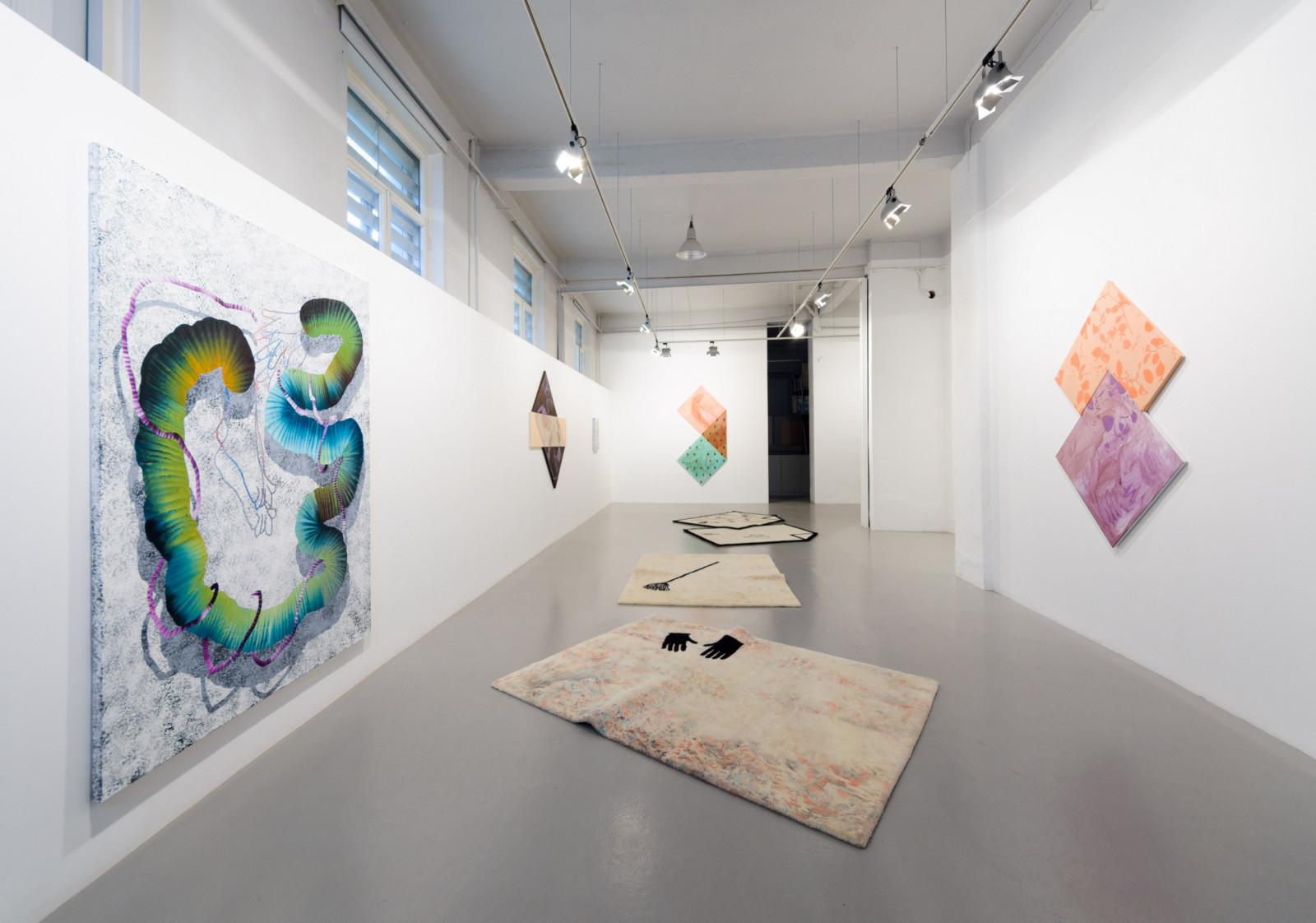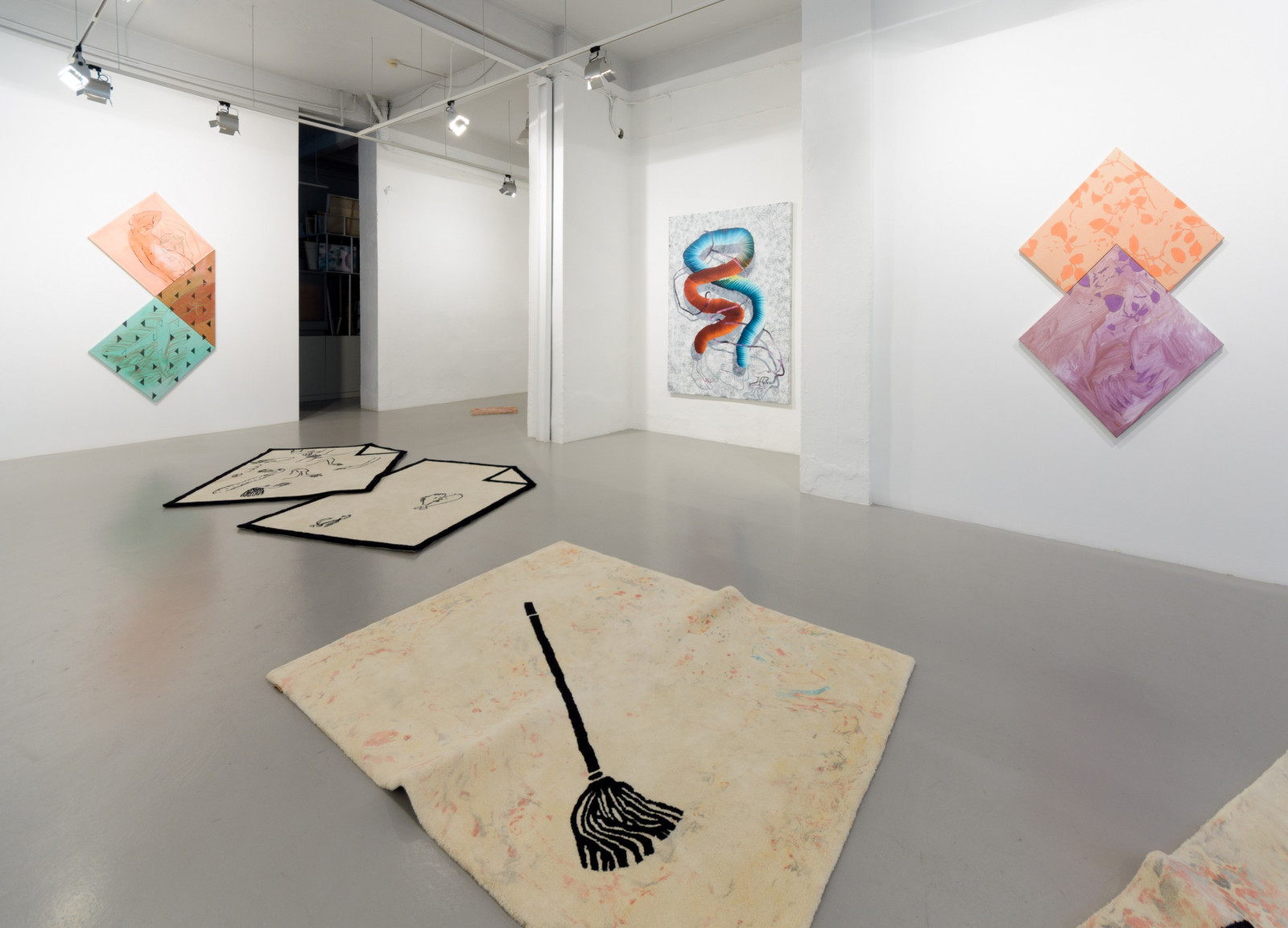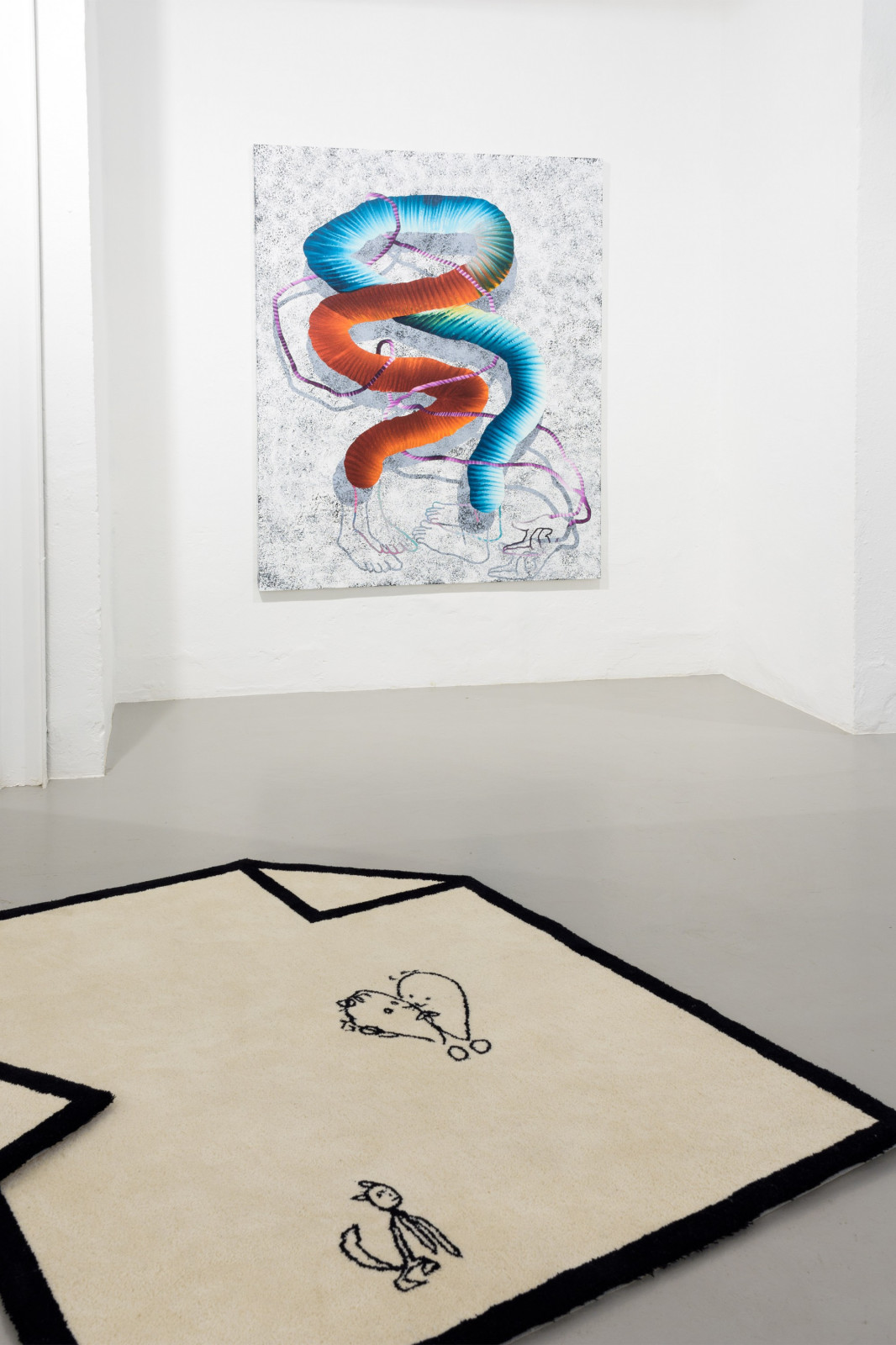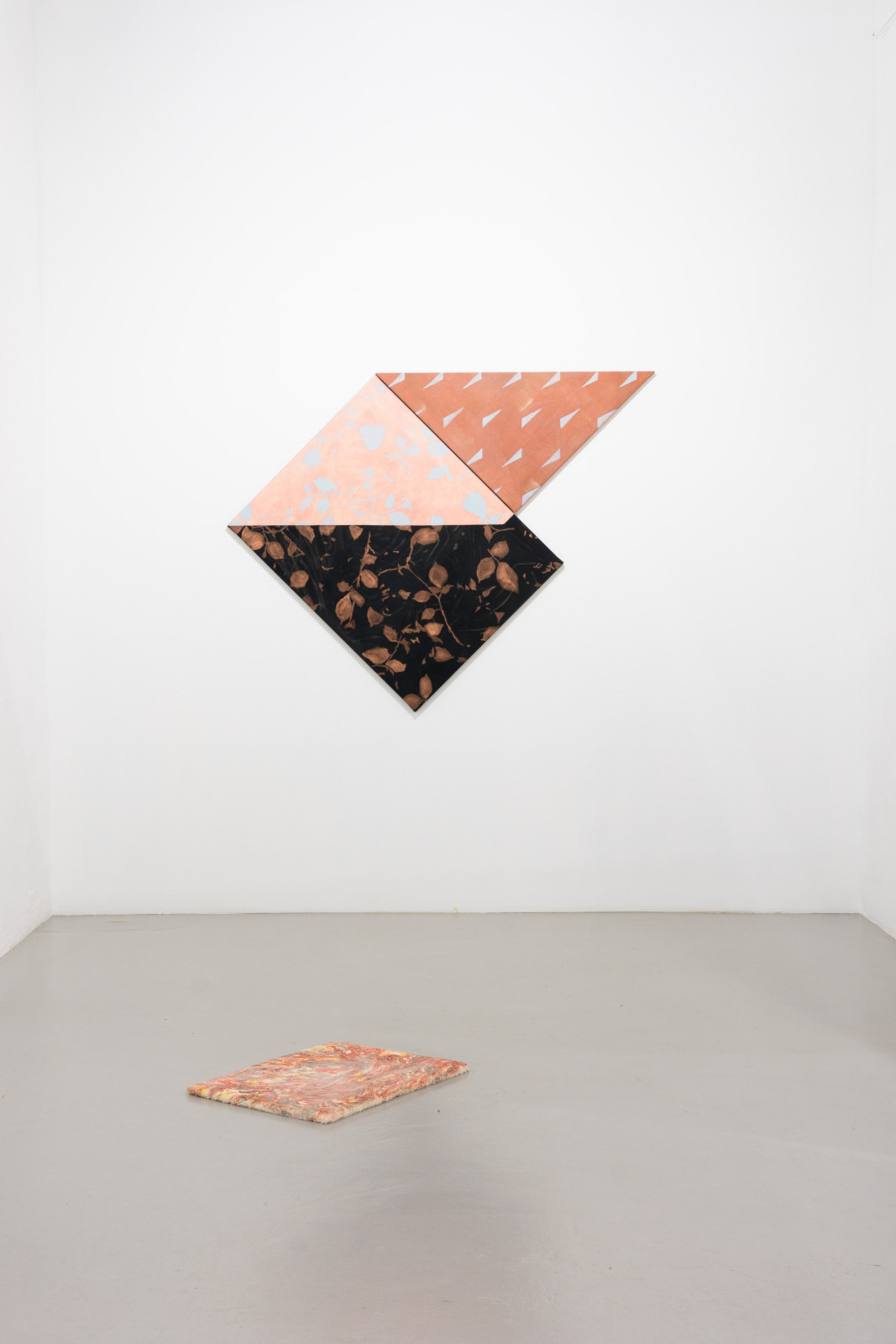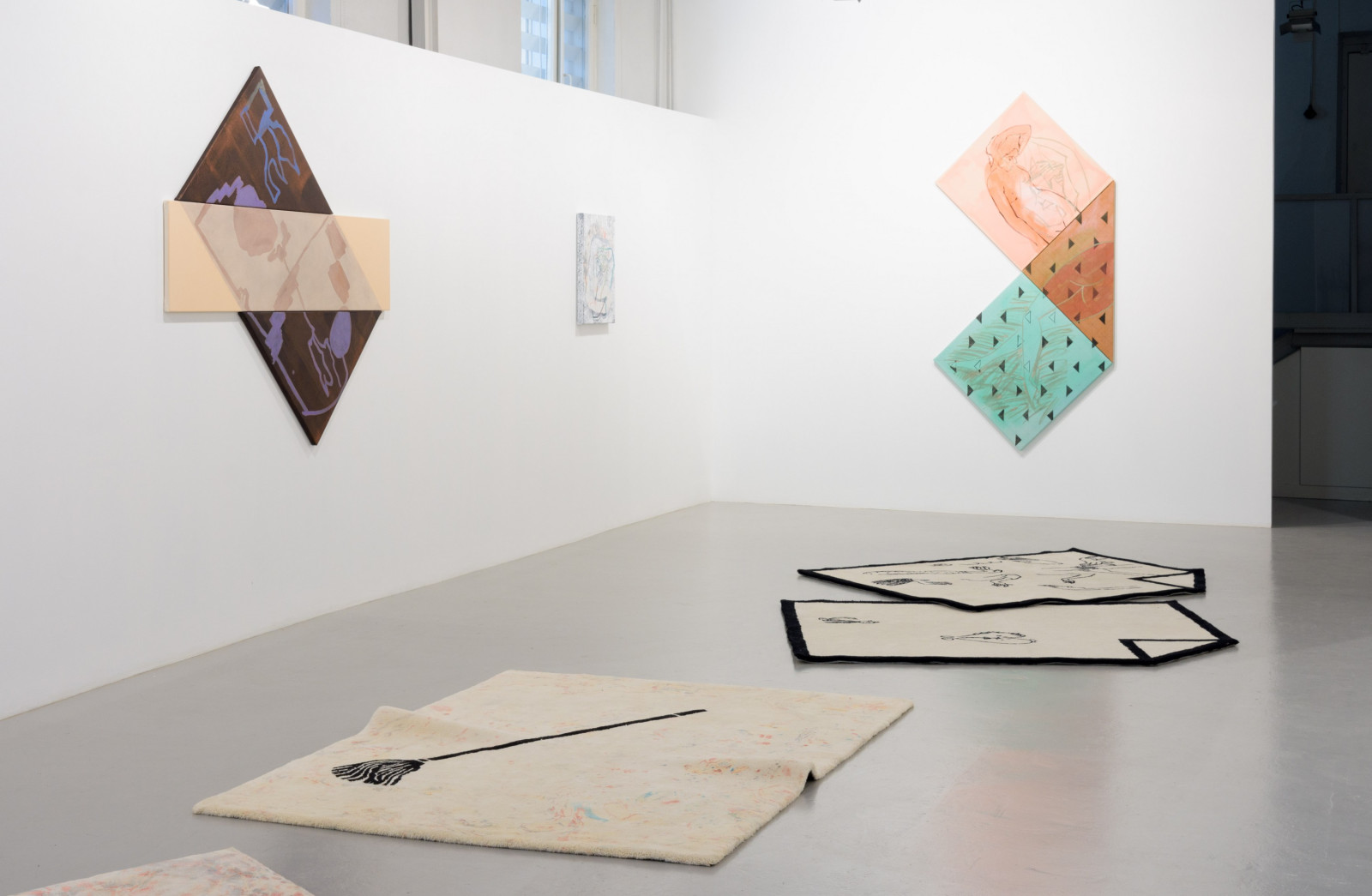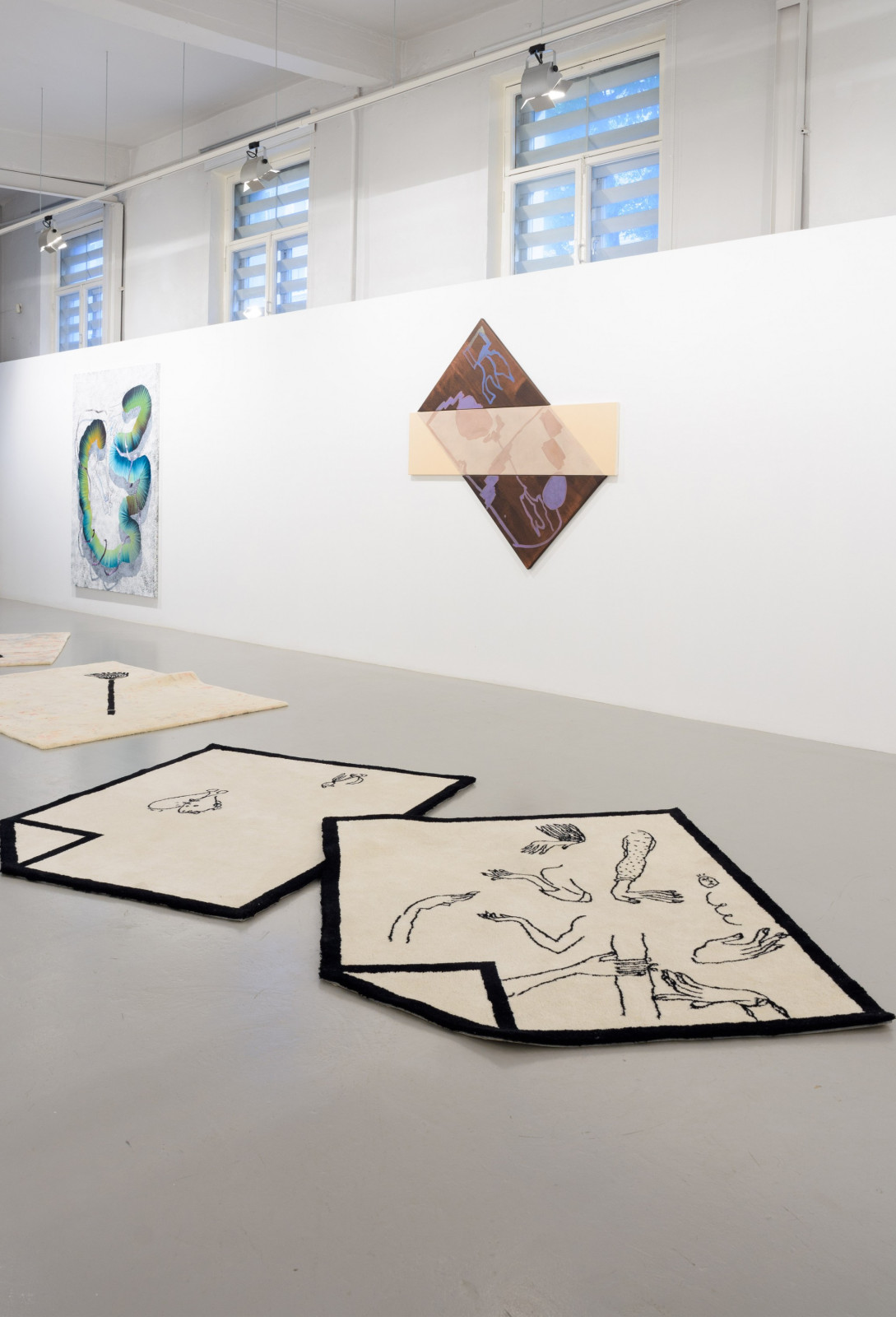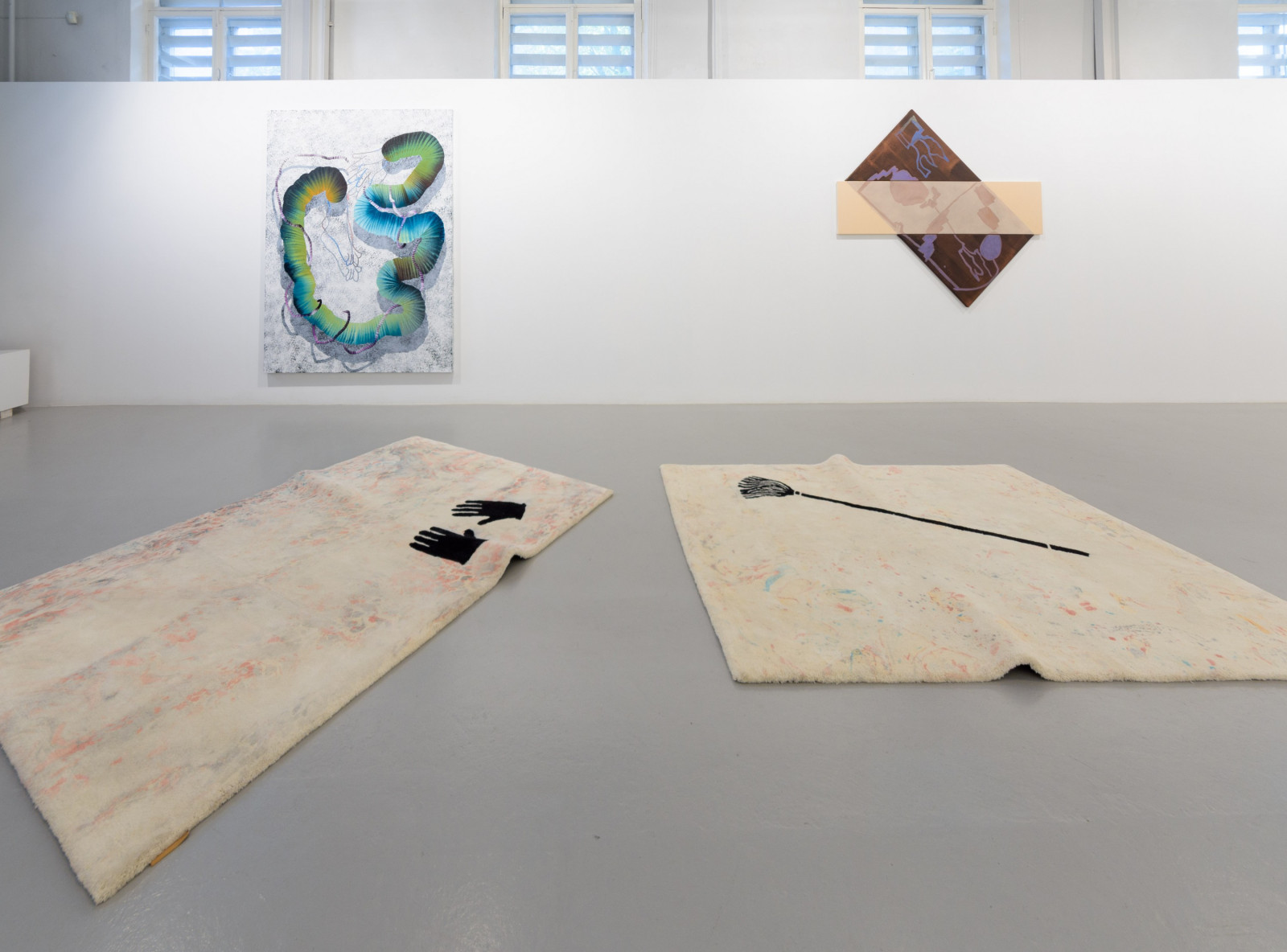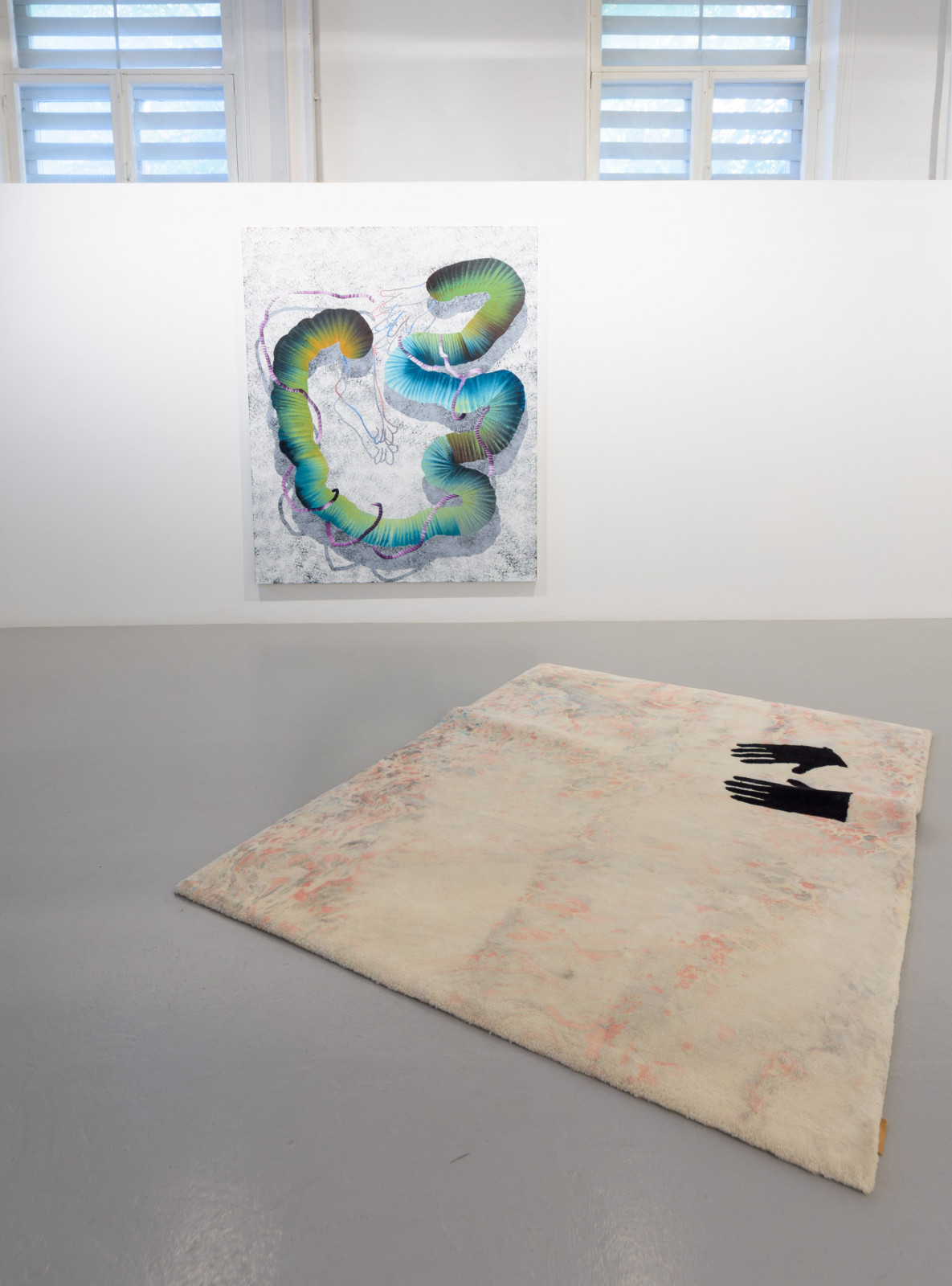Merike Estna & Ana Cardoso 'The seed can be initialized randomly II'
-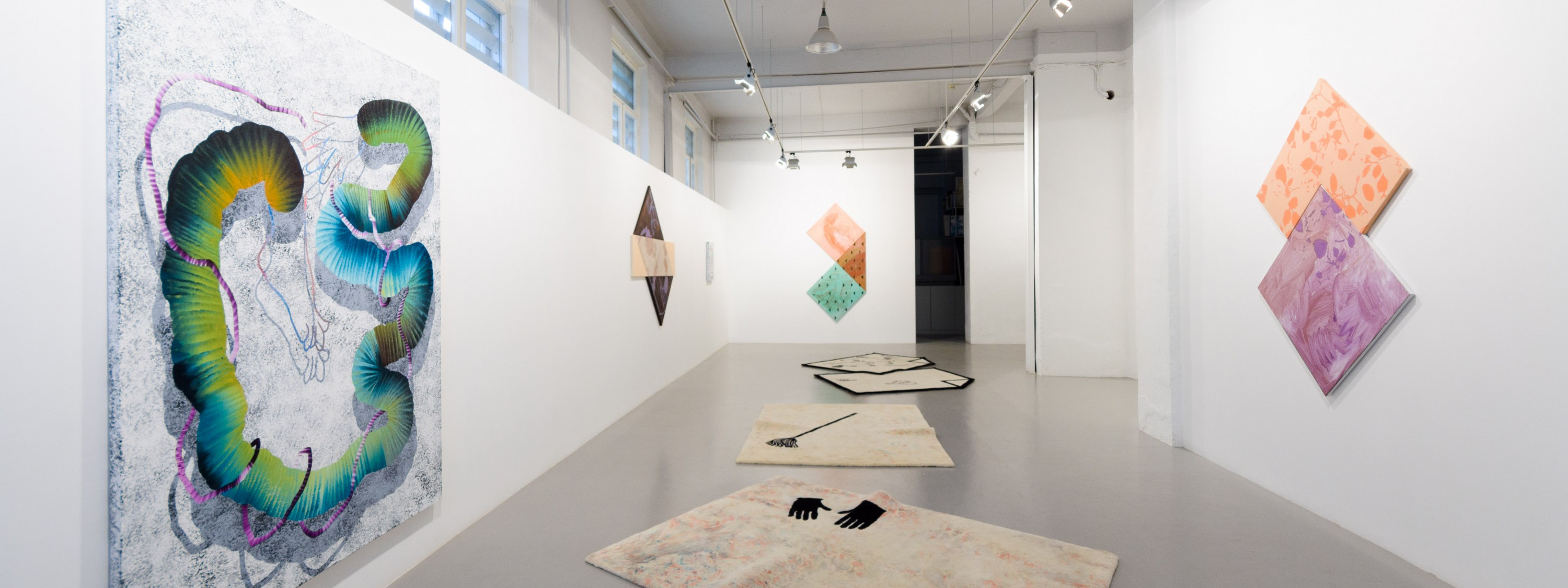
selected works
View: ,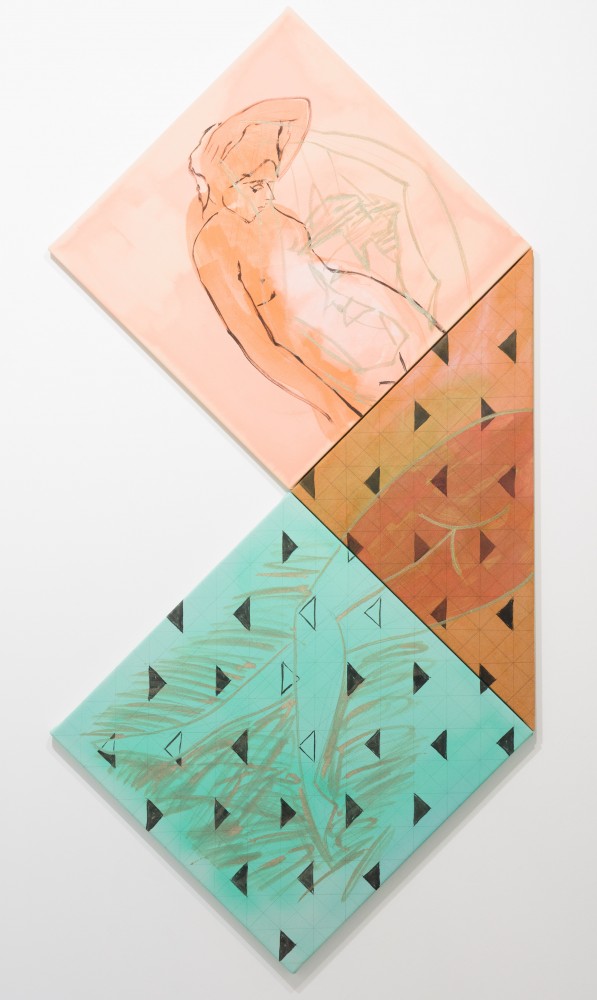
'Recto-Verso (Fold)'
triptych, acrylic on cotton and linen 222×111cm 2017
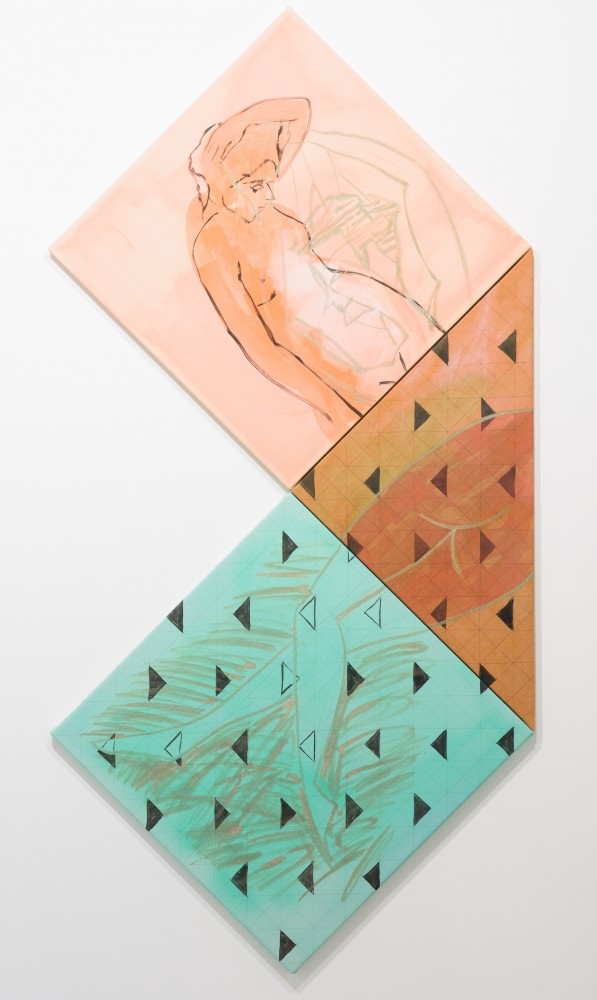
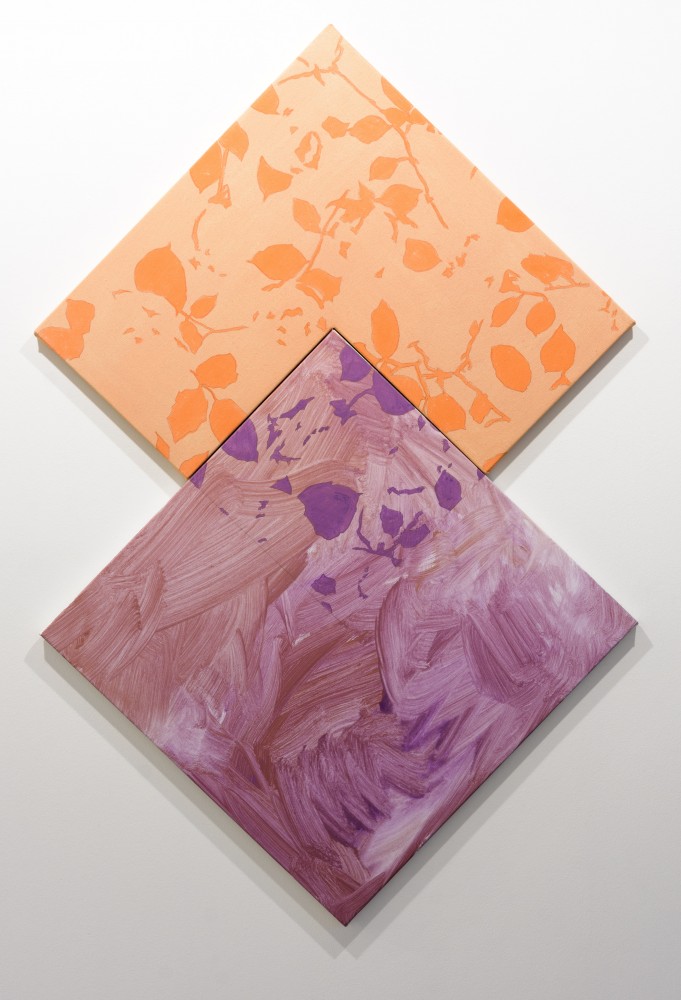
'Sample-Stack II'
diptych, acrylic on cotton 167×111cm 2017
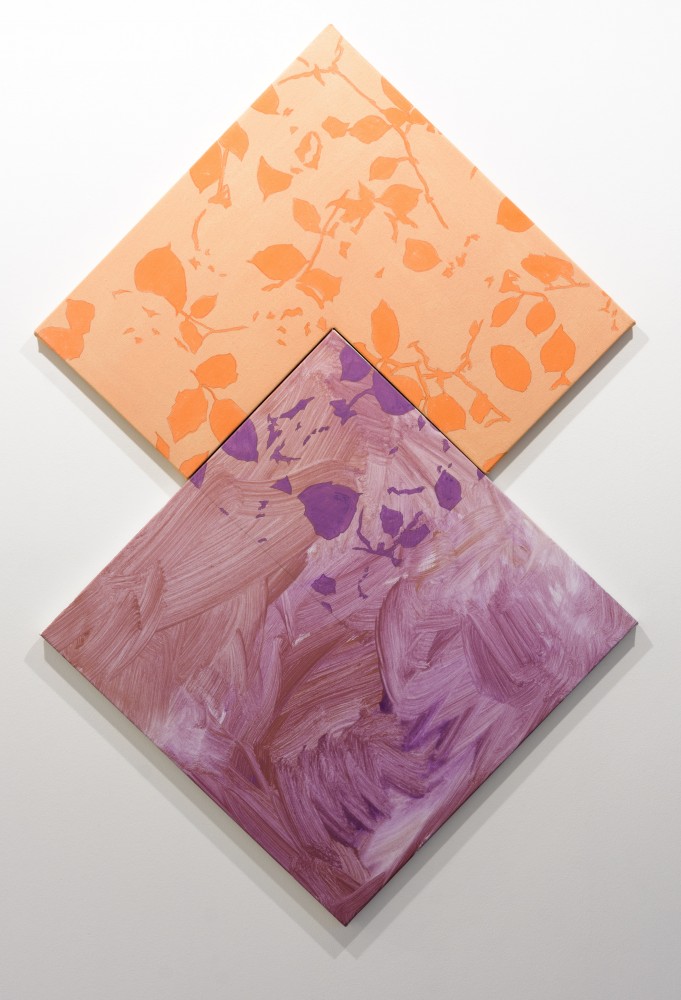
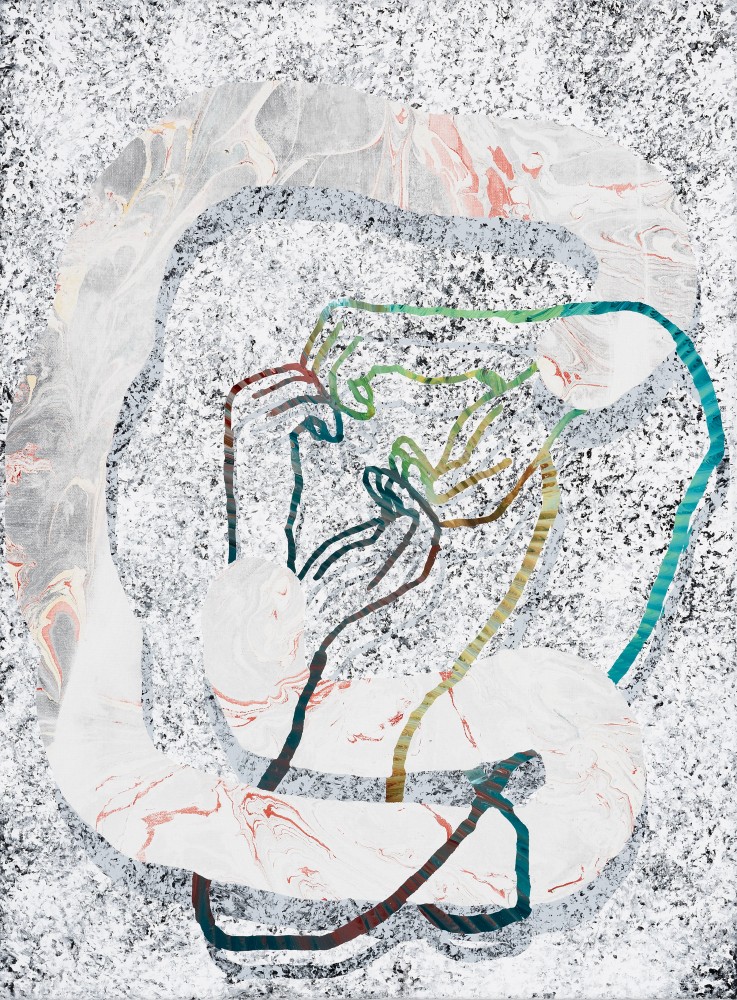
'Liquid rock'
acrylic on canvas 61×45cm 2017
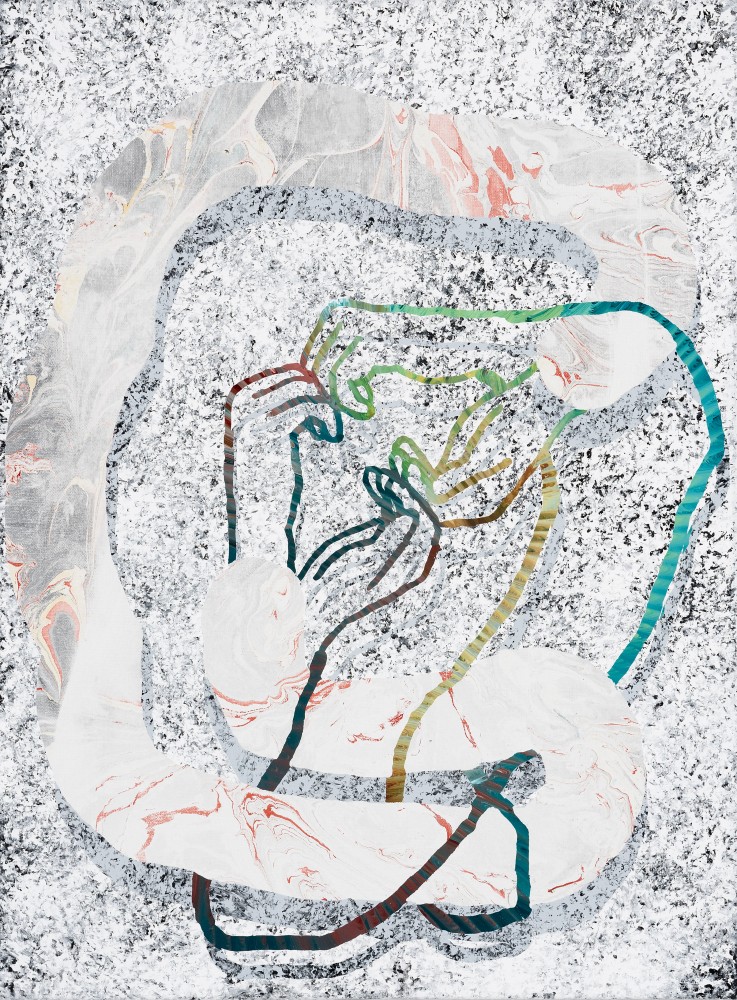
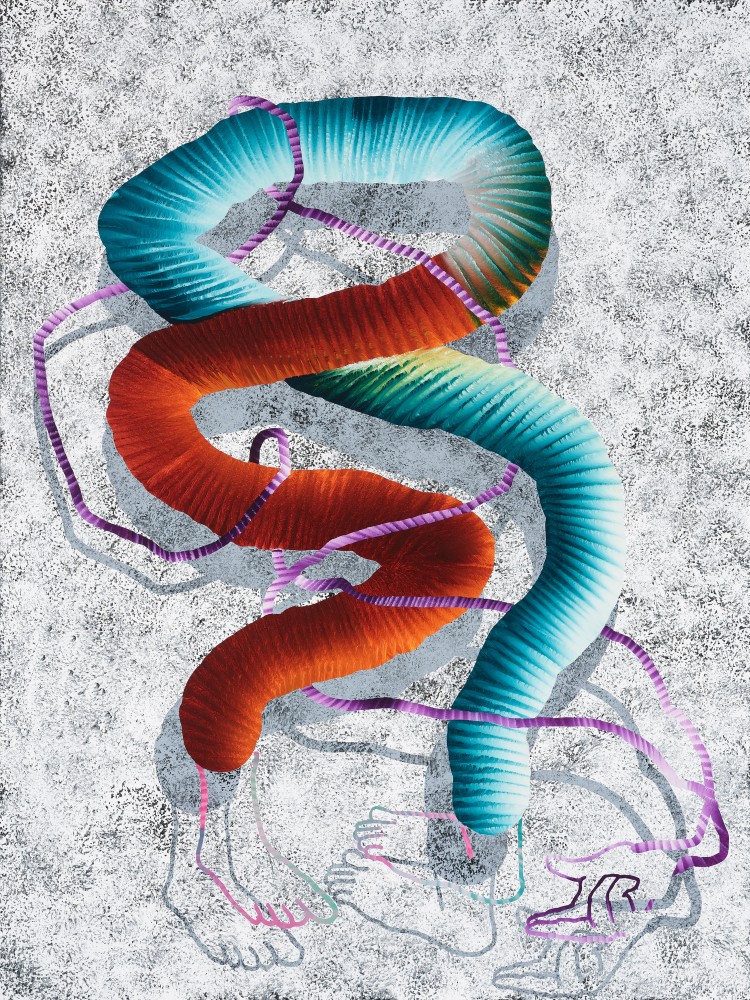
'The past of the future'
acrylic on canvas 200×150cm 2017
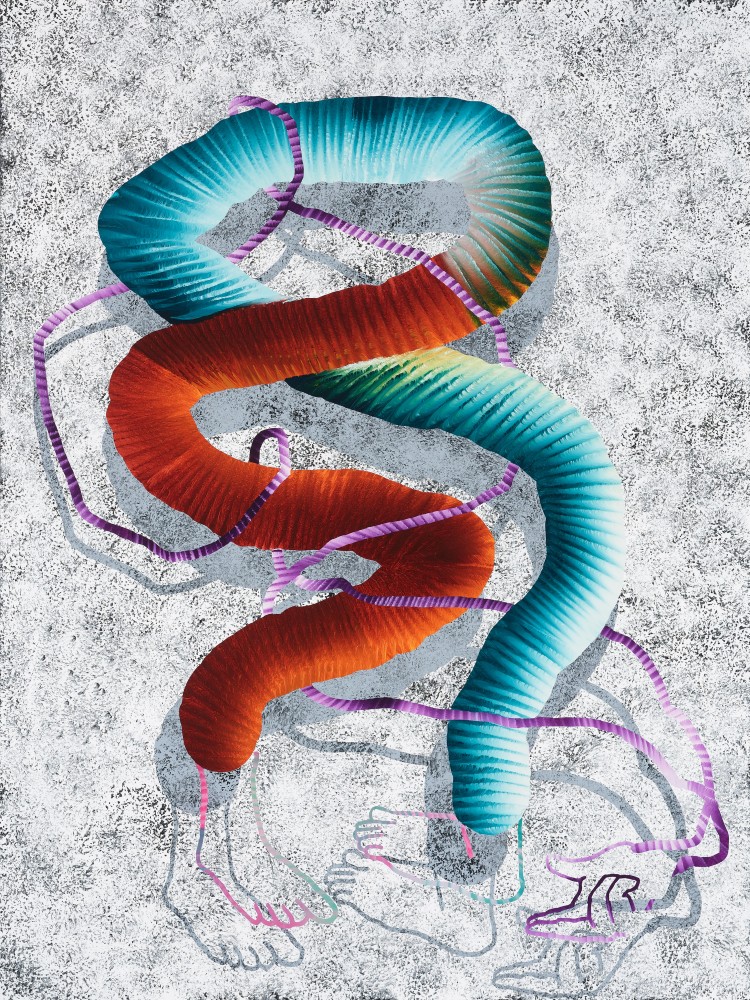
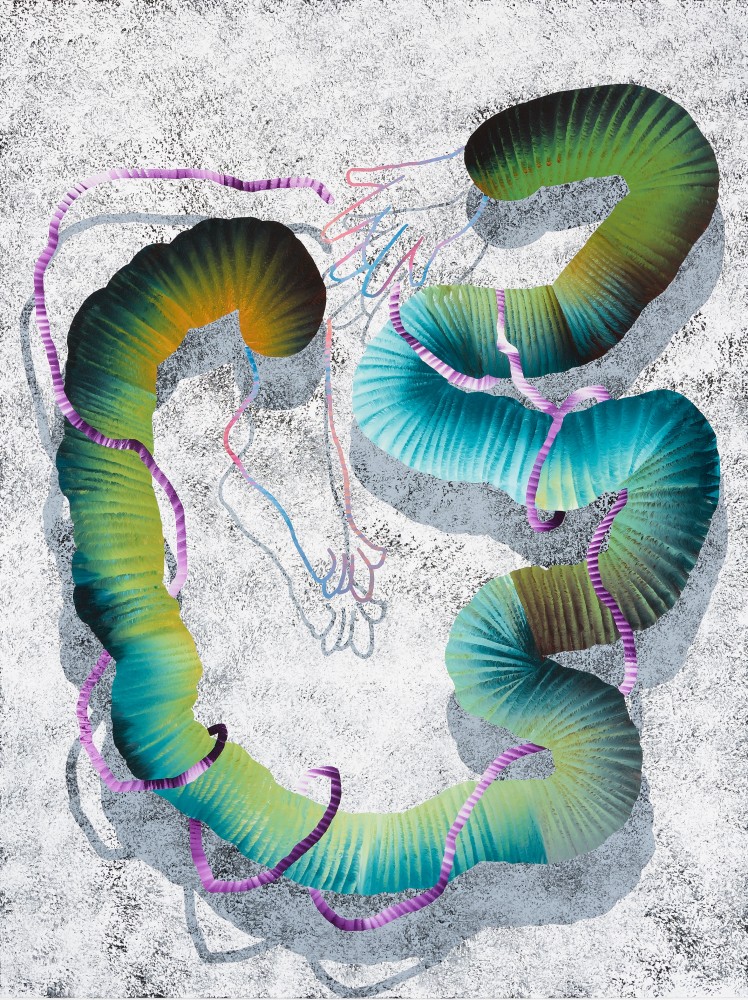
'Sad but sad'
acrylic on canvas 200×150cm 2017
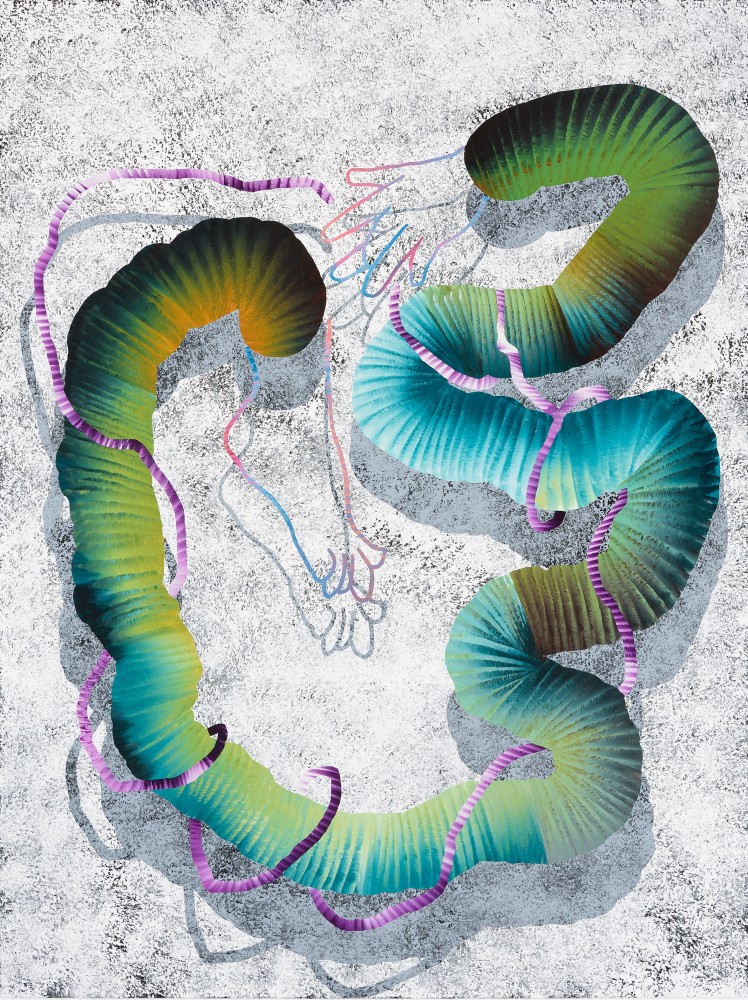
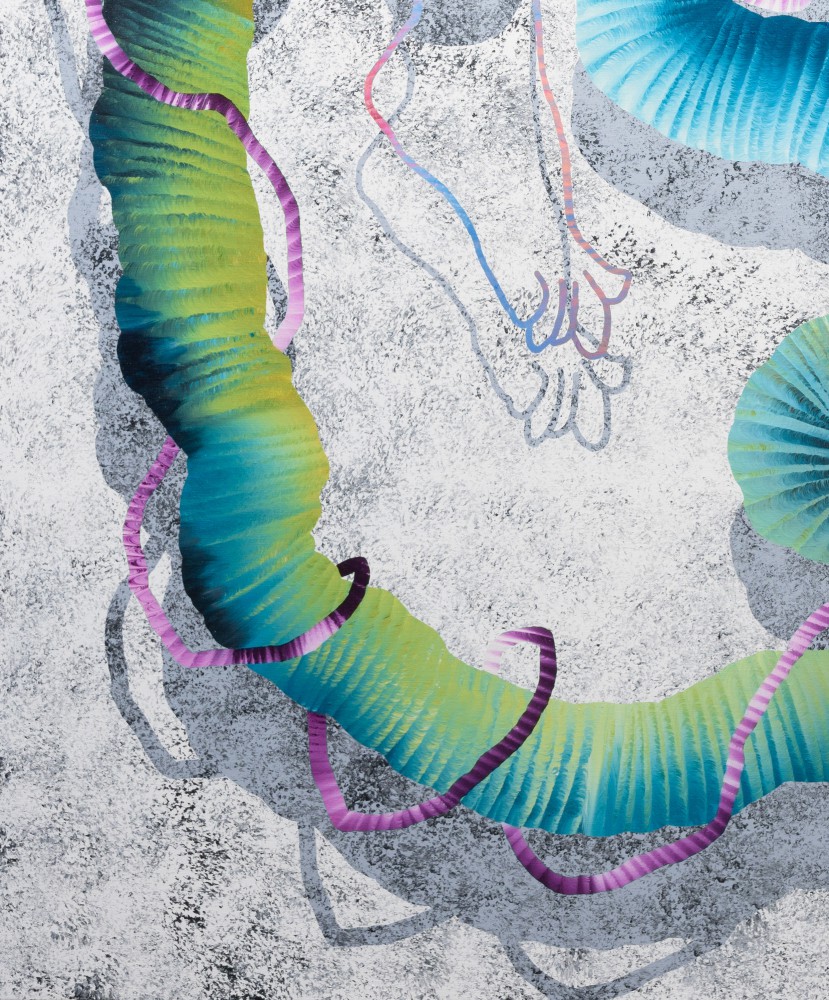
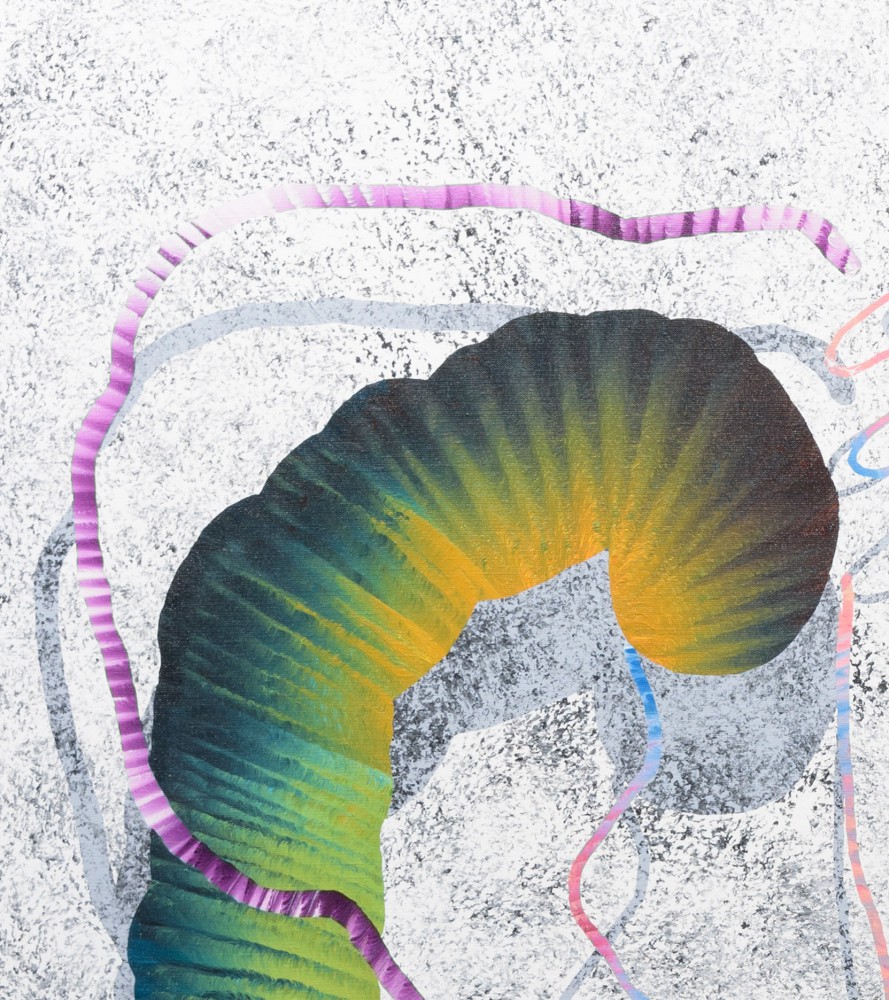
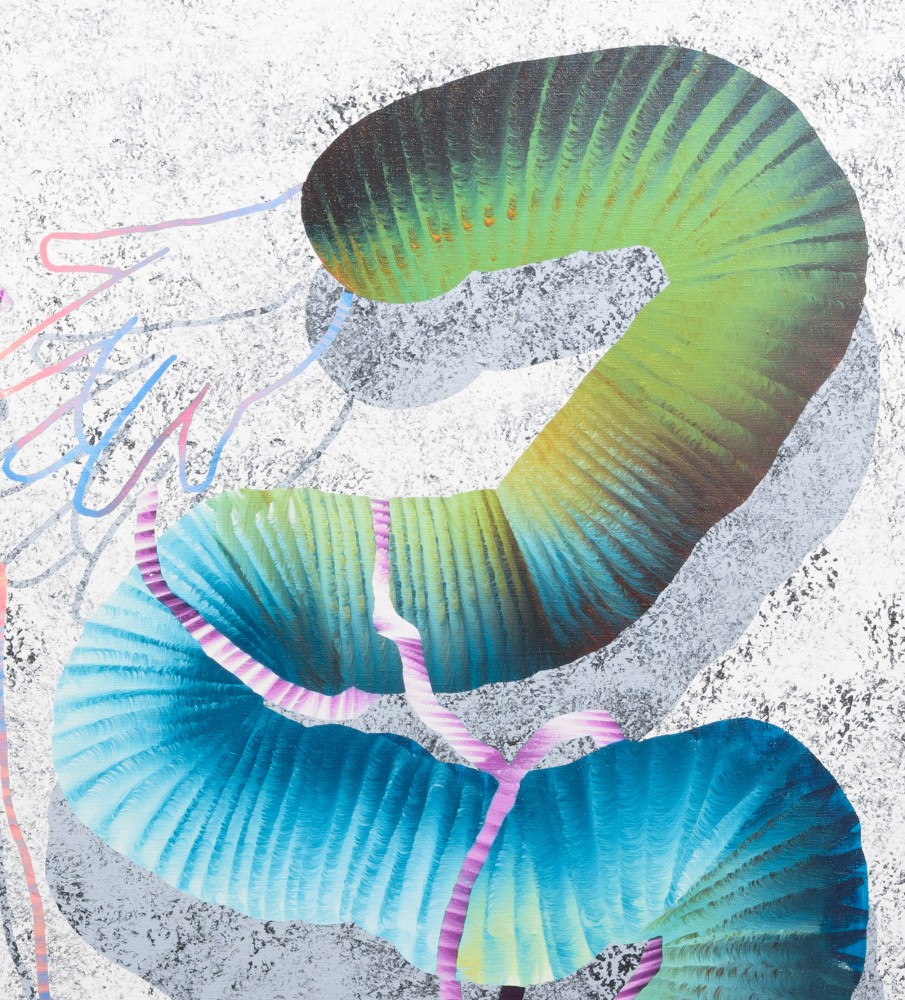
installation views
View: ,Ana Cardoso (1978) and Merike Estna (1980) are both painters who have come together at two different geographic and temporal points to explore the medium of painting, traditional crafts and a woman’s place in the art world.
The first series of this exhibition “The Seed Can Be Initialized Randomly” took place in Porto, Portugal in 2016 where the two artists explored traditional Portuguese tiles as a medium for painting. The second installment of the exhibition (Tallinn 2017) further explores what is often considered a craft material or folk art – with the artists working on paintings reinterpreted as traditionally crafted rugs.
The artists push against the notion of paintings as precious objects, and take a feminist approach to the hierarchy between crafts and applied arts versus fine arts. Women’s creative works have traditionally been less valued than the works of men. Painting was considered a masculine field, and crafts were considered women’s work. Crafts and handiwork were a task that women could work on between their other domestic duties. This is signified in the works by the hands (handicraft) and the cleansing element of domestic tools such as mops and brooms. Their works probe the boundaries what makes paintings legitimate and acceptable, and if feminine aspects and forms of creative expression are yet accepted in fine arts.
Ana Cardoso works in abstract painting and utilizes anthropometric structures, interwoven with images and materials, which enable multi-dimensional readings. Ana’s “Recto-Verso (Fold)” and “Sender Over Quota III” play with the tromp-l'oeil of a 'fold' in the canvas. The illusion of a fold references the material reality in the front and the verso (back) of a surface, which is an important characteristic of process based painting. “Sender Over Quota III” samples and alters a floral pattern, appropriated from Daan Van Golden, who had appropriated it from Japanese wrapping paper. The geometric pattern is a subtle nod to Anni Albers, her structures and gender non-specific roles.
Merike Estna’s work samples symbols like a DJ samples music, with reoccurring elements such as: David’s foot, Emojis, sign language hands, brush strokes as ready made and the liquid to solid form of rocks in marble and replica stone. Estna’s works function as a screen showing the many layers of history of the canvas through holes on the top layer of the painting. Parts of the background of the paintings peek through from the top layers – the exposed foundations denote memory, wanderlust and a romanticism of the canvas.
Ana Cardoso and Merike Estna are linked not just by their boundary pushing paintings – but also in the performative process and time-based aspects of their works. Conceptually their artworks echo contemporary social concerns with allusions to the digital, the nostalgic and a romantic reverence for parts of human existence that are mutating, melting and slipping away.
Merike Estna (1980) lives and works in Tallinn, Estonia. She has graduated from the Estonian Academy of Arts with a Bachelor’s degree in painting and from the Goldsmiths College, University of London, in 2009 with the Master’s degree in art practice.
Her recent exhibitions include: duo exhibition together with Keef Winter, Hardwick gallery, Gloucestershire (2017); group exhibition “(In)visible dreams and streams“, curated by Maija Rudovska, ARS project space, Tallinn (2017); duo exhibition together with Ana Cardoso, Múrias Centeno gallery, Porto (2016); group exhibition “WINTER IS COMING (Homage to the Future)“, curated by Maria Arusoo, Georg Kargl gallery, Vienna (2016).
Her upcoming exhibitions include: “Double Think, Double Vision“, curated by Alistair Hicks, Pera Museum, Istanbul (2017); performance at Karin Huber gallery, Mexico (2017); duo exhibition together with Kris Lemsalu, curated by Thomas Cuckle, Kunstraum, London (2017); solo exhibition at Karin Huber gallery, Mexico (2018); solo exhibition at kim? Contemporary Art Centre, Riga (2018).
Ana Cardoso (1978) lives and works in New York, USA. In 2006 she received her MFA from Hunter College — CUNY, New York and in 2002 she received a BFA from FBAUL, the Fine Arts University of Lisbon, while in 2001 she attended UdK — Universität der Künste, Berlin.
Her recent solo and duo exhibitions include: “Logic Operators Commute”, gallery Collicaligreggi, Catania (2016); “The Seed Can Be Initialized Randomly” together with Merike Estna, Múrias Centeno gallery, Porto (2016); “Vacation with Tim Pierson”, gallery Four A.M, New York (2016); “Folder”, Maurani Mercier gallery, Knokke (2016); “Progress”, Chiado Contemporary Art Museum, Lisbon (2015); “The Hinge”, Andrew Rafacz gallery, Chicago (2015); “The Other Side and In Between with Christian Bonnefoi”, gallery Longhouse Projects, New York (2014); “Program vs Program”, Pedro Cera gallery, Lisbon (2012); “Picasso”, Maisterravalbuena gallery, Madrid (2012).
